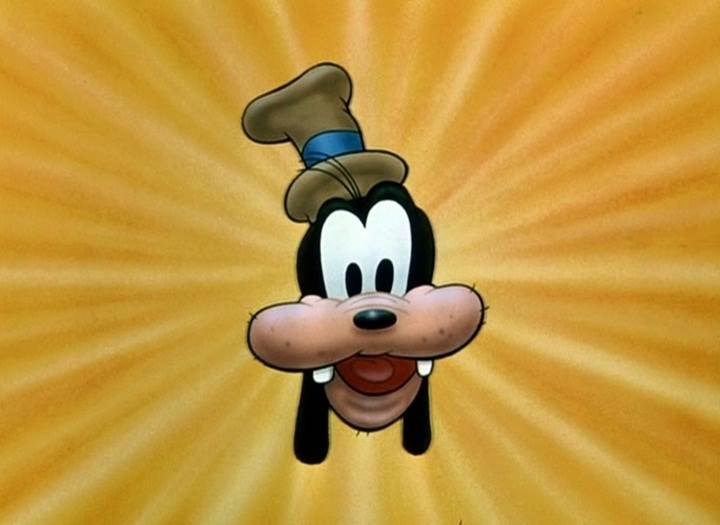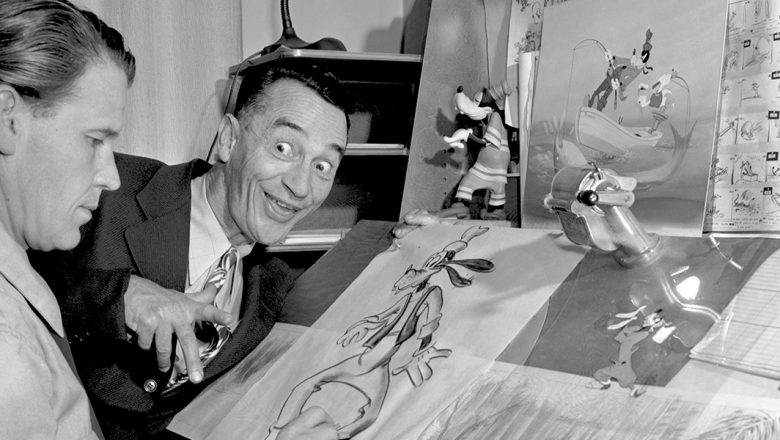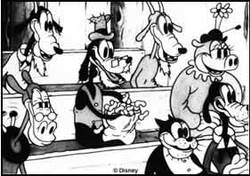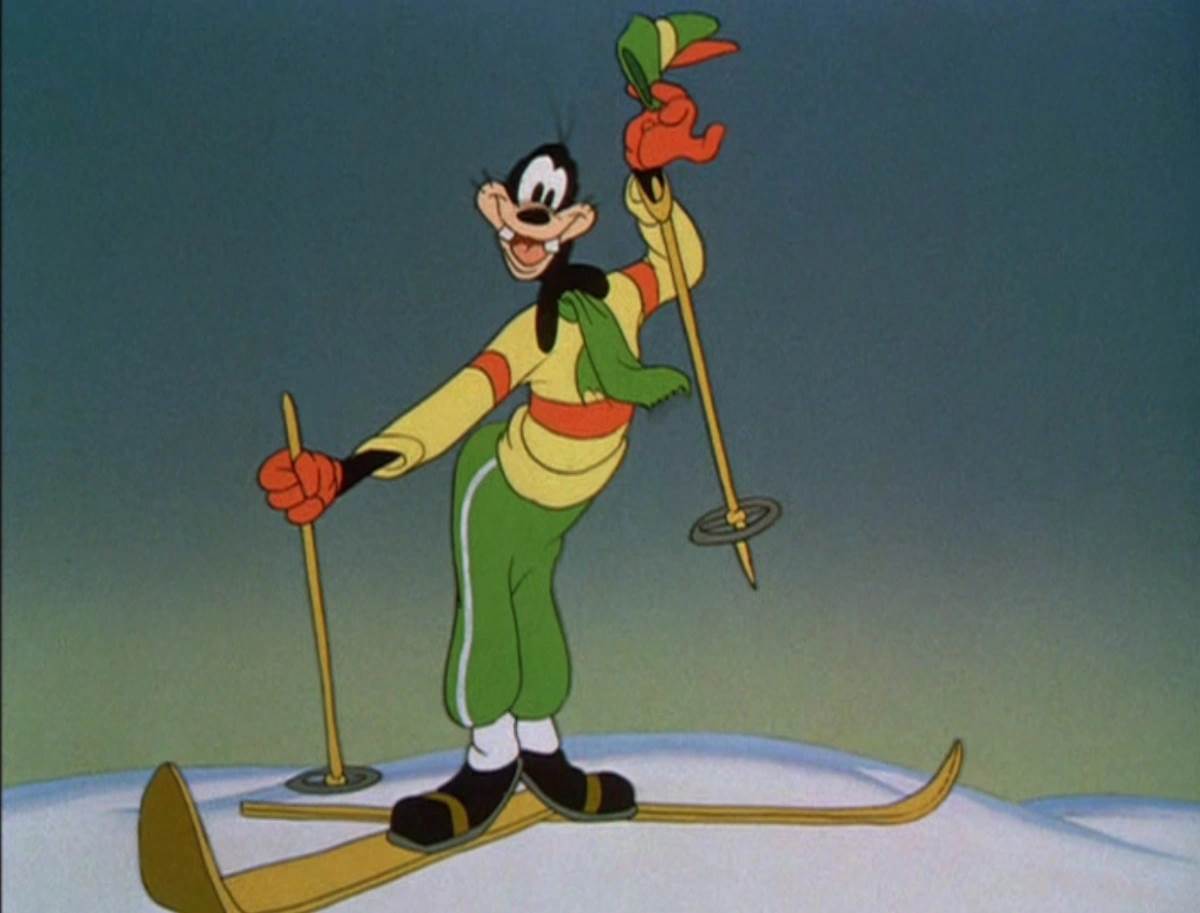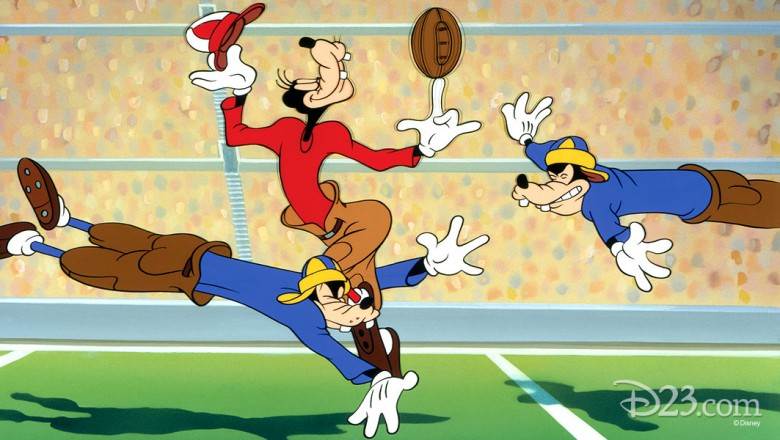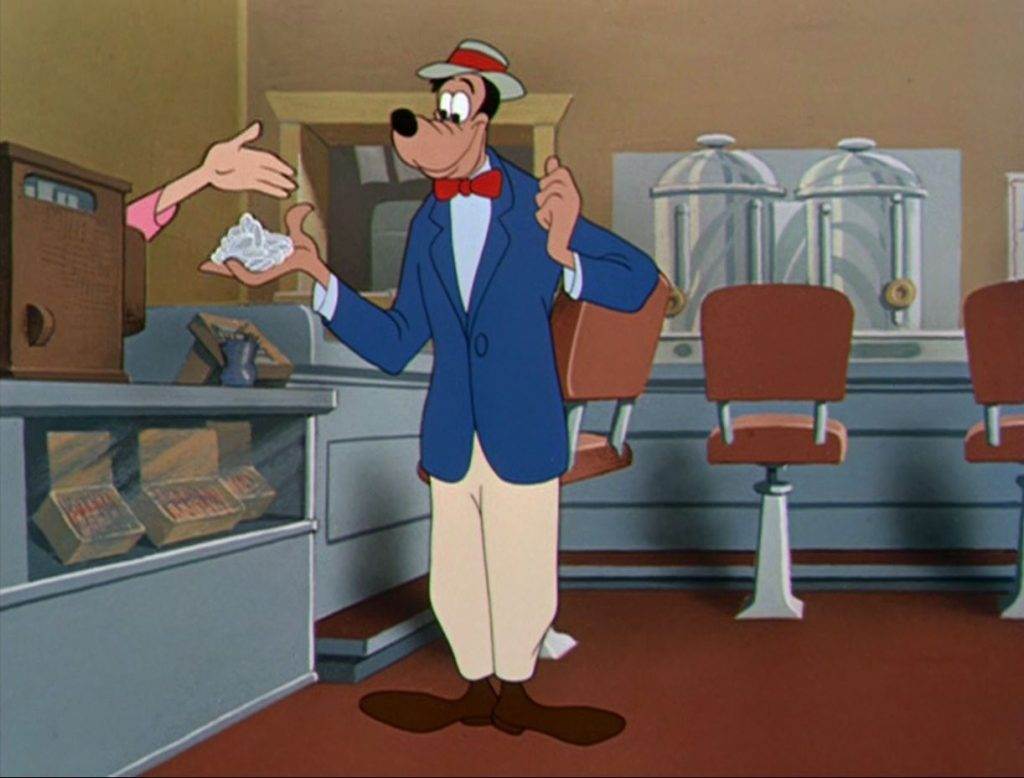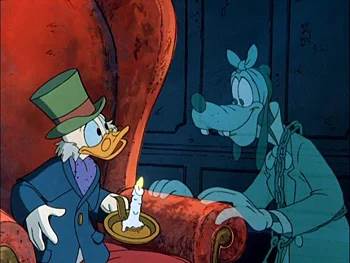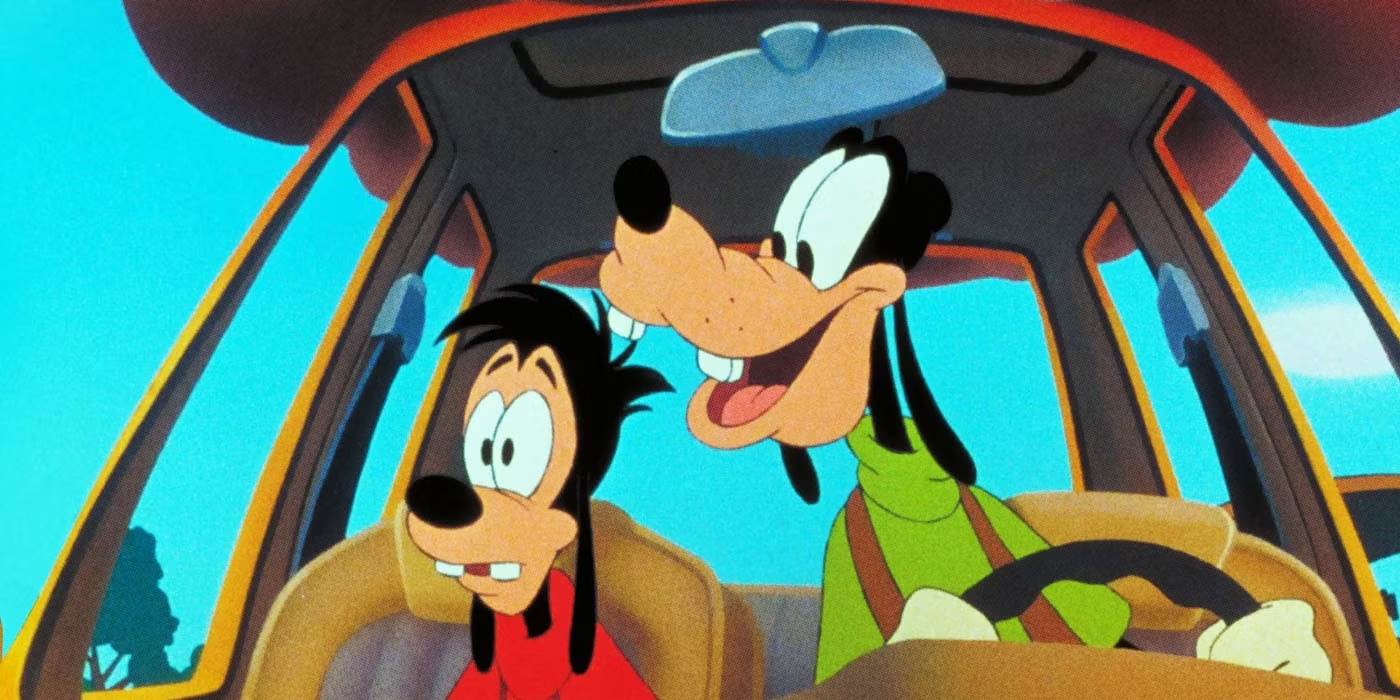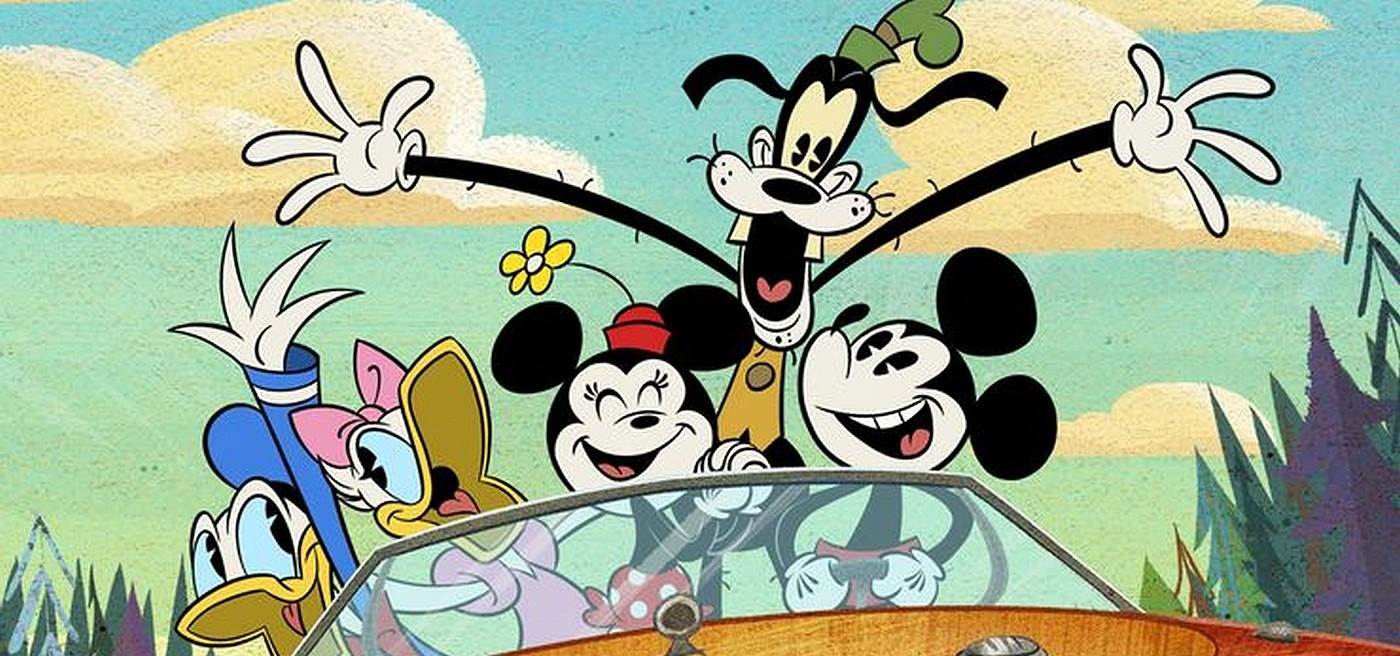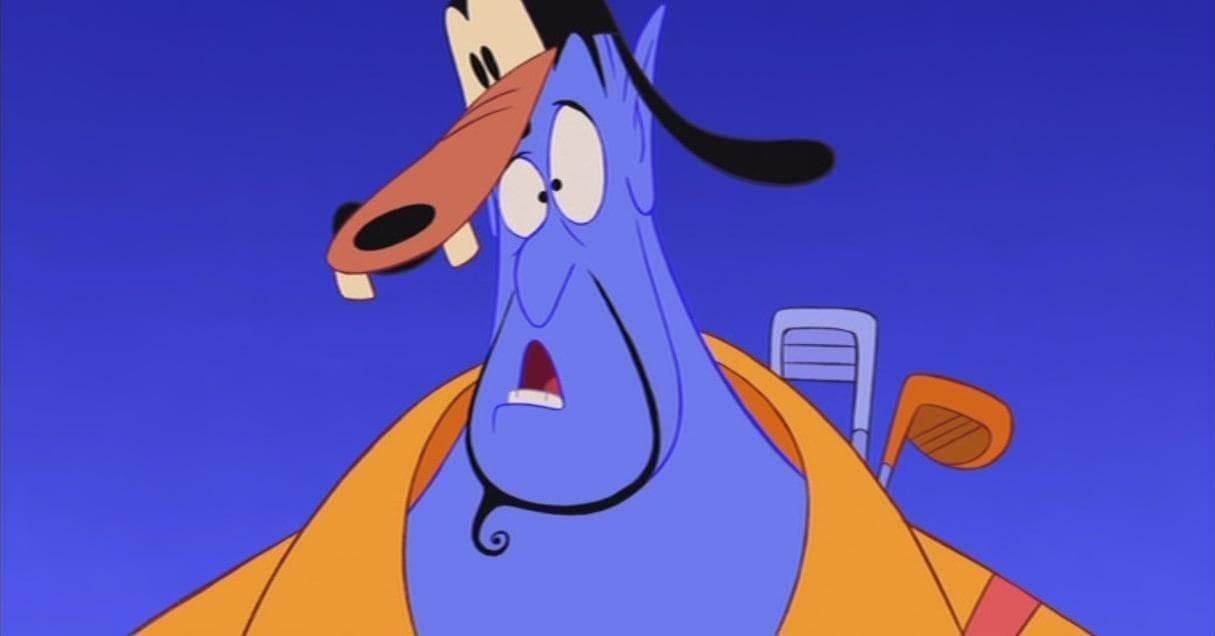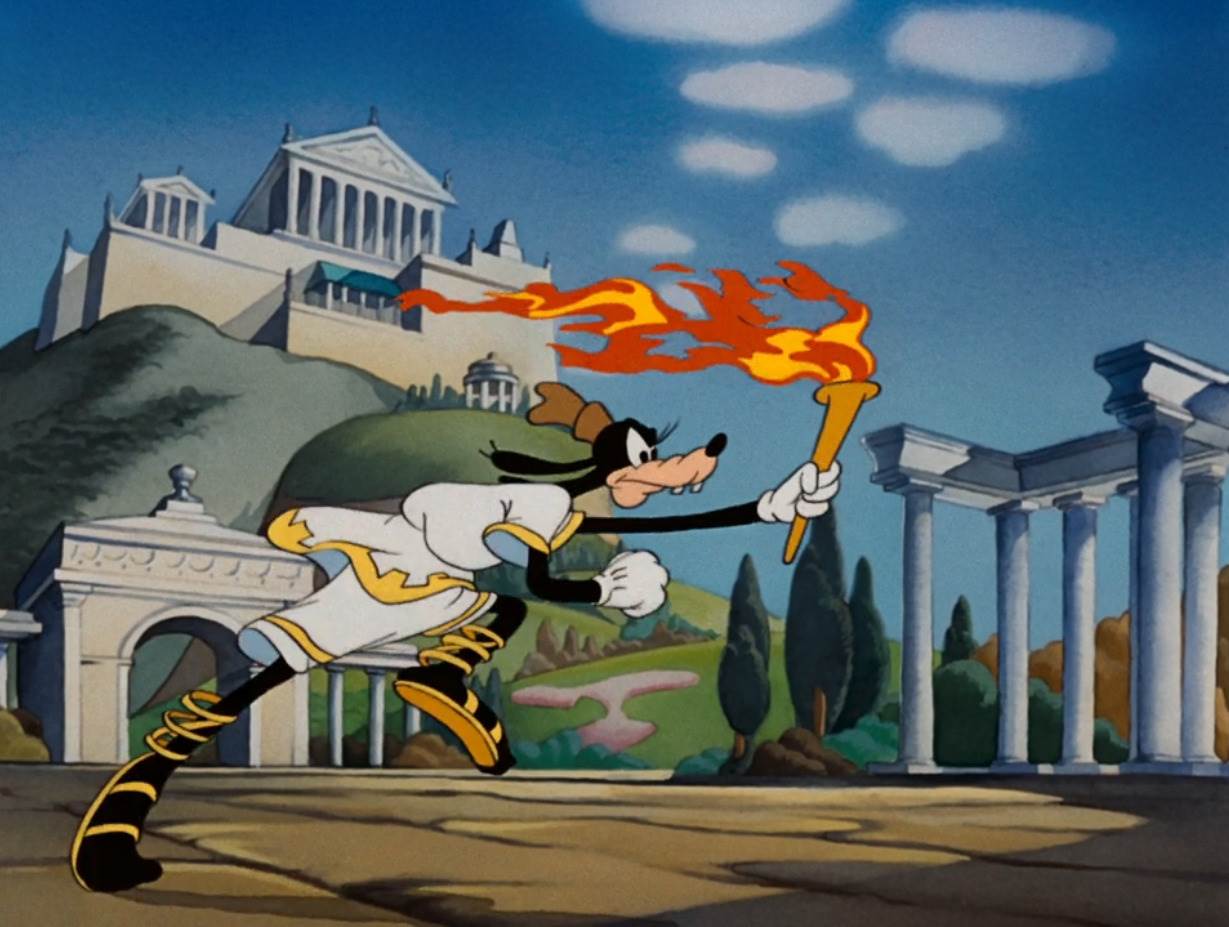Gee, what have we here? Goofy – Disney’s unofficial president of pratfalls – first entered the hallowed halls of Disney animation in 1932. For 92 years and counting, he’s grown ever more beloved as our hapless – yet always happy – bosom buddy. Let’s take a closer look into the life and times of Goofy.
Image: Disney
A Dim Light of Inspiration
The character of Goofy as a dim-witted dumbbell originated long before the character was even considered for animation. He began in the mind of Vance DeBar “Pinto” Colvig – circus and vaudeville performer turned animator for the Disney Studios. Colvig has regaled inquiring minds regarding the time he was reminiscing with Walt Disney about a “grinny, half-baked village nitwit” back in his hometown of Jacksonville, Oregon. Colvig identified the nitwit as a local flagman that worked at his town’s main railroad crossing, and described him as a “slow-minded guy who is the happiest fellow in the world.”
Image: Disney
In part homage and part jest, Colvig adopted and embellished those mannerisms to use as a vaudeville stage character, “Oregon Appleknocker.” At the Disney Studios, he performed this impersonation for Walt, who was intrigued by the idea. Eager to expand his cast of animated characters beyond Mickey Mouse, Walt decided to develop a new character based on the “Oregon Appleknocker.” The next day, Colvig Pinto went in front of a microphone and camera and again performed his vaudeville character, while Disney animator Tom Palmer sketched out a character based on his performance.
The outline of a legend was beginning to take shape.
Dippy Dawg
Pinto Colvig’s brainchild made his first appearance on May 27, 1932 in the animated Disney short Mickey's Revue. But this wasn’t exactly the Goofy we would come to know and love. The character debuted as Dippy Dawg, as he was known by the Disney artists involved with his creation. He was decidedly different looking than the modern Goofy, taking on the appearance of an old man with a white beard and a puffy tail, with no pants, shorts, or undergarments. Dippy Dawg had very little to do in the short, other than crunch his peanuts and cackle at the performance. But the short introduced that distinctive guffaw-type laughter – provided by Colvig himself.
Image: Disney
Dippy Dawg was reimagined just a few months later, in the September 17, 1932 short The Whoopee Party. Here, as a guest at Mickey’s party, he took on a much more youthful appearance.
Becoming Goofy
All told, Dippy Dawg made six appearances between 1932 and 1933. But by his seventh appearance – the August 11, 1934 short Orphan's Benefit – he gained the new name "Goofy," and became a regular member of the gang along with a notable new addition – Donald Duck – who had made his debut just a couple months earlier in the The Wise Little Hen.
Image: Disney
Goofy’s earliest appearances were still only as supporting characters. But one Disney artist set out to establish Goofy as a force to be reckoned with. Animator Art Babbitt, who had begun animating Goofy, wrote a two-and-a-half page character bio for the character, entitled Character Analysis of the Goof, which circulated around the Disney studio in late 1934. Babbitt's analysis was a deeper dive into the personality of animated characters than Disney had been practicing to that point. The piece was highly influential throughout the studio, and soon, character bibles were being adopted for all of Disney's major stars at the time, including Mickey, Donald, and Pluto. Unsurprisingly, Babbitt became the Goofy specialist at the Disney studio.
Babbitt continued to develop Goofy when he next animated him in the September 1935 short On Ice. Here, Babbitt developed a technique he called "breaking the joints" – where Goofy's arms, legs, feet and other appendages would bend the wrong way for a few frames before popping back into the correct position. Babbitt’s technique gave Goofy more loose and unpredictable movements, which helped to highlight his clumsy personality.
Image: Disney
In his third go-round animating Goofy, Babbitt inadvertently pioneered his way into animation history. While animating Goofy for the June 1936 short Moving Day, Babbitt needed to animate a scene where Goofy attempts to move a piano onto a truck. For this scene, he filmed Pinto Colvig performing Goofy's movements (in his Oregon Appleknocker persona), making Babbitt the first animator to use live-action reference for animation. The technique would be refined and employed in the 1937 feature film Snow White and the Seven Dwarfs.
Goofy’s Voice
Goofy has had two major voices over the years. With Pinto Colvig’s personality providing the genesis of Goofy’s personality, it’s no surprise that the former circus and vaudeville performer also lent his voice to the Goof, starting with his earliest days. Colvig had begun working for the Disney studio as a story man in 1930. He voiced Goofy from the character’s debut, until he left Disney in 1937. Disney filled the void left by Colvig with a combination of recycled Colvig recordings, mixed with new voice performances by Jack Bailey and George Johnson. When Colvig returned to the studio in 1941, he resumed his role as Goofy’s voice until he passed away in 1967.
Trivia Tidbit: Aside from immortalizing Goofy, Colvig also portrayed the original Bozo the Clown on television in the 1940’s. He also voiced two dwarfs – Bashful and Grumpy – as well as Mickey’s pet Pluto.
After Colvig passed, a rotisserie of voice actors – primarily Hal Smith and Jack Wagner – sparingly filled Goofy’s voice role, until Disney found comedian Bill Farmer in 1987. Farmer seamlessly adopted the Goof – as well as Pluto – and has been Goofy’s official voice longer than anyone else.
Image: Disney
Goofy-isms
Like most classic cartoon characters, Goofy has his share of signature catchphrases. Perhaps the most famous is his drawling “Gawrsh!”
When it comes to laughing, nobody does it better than Goofy, with his chuckle of “Ah-hyuck, ah-hyuck.”
Image: Disney
But perhaps the oddest – and hardest to imitate – of Goofy’s catchphrases is the manic "Yaaaaaaa-hoo-hoo-hoo-hooey!" Known as the “Goofy Holler,” it's the cry Goofy makes when he falls or is launched into the air. The holler was originally recorded by world-class skier (and colorful yodeller) Hannès Schroll, for the 1941 short The Art of Skiing. Walt and Schroll were good friends. Schroll gave Walt and his family ski lessons, and Walt offered Schroll funding when Schroll was looking to build a ski resort – Sugar Bowl – in 1939. Schroll opened his Sugar Bowl Resort in December 1939 and renamed one of the mountain peaks Mount Disney, in honor of Walt. Walt’s friendship with Schroll – as well as Walt’s contributions to the 1960 Winter Olympics in Squaw Valley, CA – were two major influences that led Walt to pursue the Mineral King ski resort in the 1960s.
Goofy’s “How-To” Series
They say “necessity breeds invention,” and while Colvig was away from Disney, the studio found a clever way to progress Goofy’s character in the absence of his distinctive voice. Disney developed a series of shorts where Goofy was largely silent, with the action being narrated by a rather serious-sounding John McLeish. The narration of these films provided the perfect counter-compliment to Goofy’s clumsy nature. These shorts – often based on various sports scenarios – were hugely successful, and remain among the most popular Goofy shorts of all time. So successful, in fact, that the narration component to the shorts was even carried beyond the “How-To” concept to include narration of life in general – with Goofy as the unwitting subject.
Image: D23
Two of Goofy’s shorts from this era – the 1944 short How to Play Football and the 1961 short Aquamania – were nominated for an Academy Award for Best Animated Short Film.
In recent years, Disney re-stoked the How-To series, with the 2007 short How to Hook Up Your Home Theater. Most recently, Disney produced a three-short series in 2021 with the titles How to Wear a Mask, Learning to Cook, and Binge Watching – all of which were humorous takes on staying home during the COVID-19 pandemic.
Meet George Geef
The popularity of Goofy’s depiction in the “How-To” series led to another alias of Disney’s top dog – George Geef.
Image: Disney
Beginning in the 1951 short Cold War, Goofy – as George – resembled a suburban “everyman” of the late 1940s and 1950s. Unlike the purely gag-based humor of Goofy’s earlier appearances, the humor in the George Geef shorts was more sedate – mostly poking fun at suburban life in the 1950s. Commensurate with the role shift, Goofy’s appearance changed considerably. His facial stubble, protruding teeth, and at times even his distinctive long black ears were removed to give him a more refined look. His clothing wardrobe improved, even to the point of wearing business suits. He was portrayed as being married (though we never saw his wife’s face) and having a son of his own – known at the time simply as “Goofy Junior.” Both Goofy’s wife and son appeared more human like Goofy as well.
Goofy’s “everyman” persona ended with the 1965 short Goofy’s Freeway Troubles. With the death of Pinto Colvig in 1967, Goofy’s Freeway Troubles also proved to be the final short in Goofy’s “classic” era.
The Rebirth of Goof
Following the death of Colvig, Disney produced very little Goofy content throughout the 1970s and 1980s, with the most notable exception being the 1985 holiday classic Mickey’s Christmas Carol, where he portrayed Ebeneezer Scrooge’s former partner Jacob Marley. But the 1990s would see a rebirth of the Disney comic legend.
Image: Disney
In 1992, Goofy got his own television series – Goof Troop – where his character was largely restored to his original wacky glory. Big nose, buck teeth, long ears – it was all back. Another piece of Goofy’s past returned in the form of a son – now called Max. Together as a father-an-son unit, the pair live next door to Pete (Mickey’s long-time nemesis) and his family.
Goof Troop’s television success led to a couple movies: A Goofy Movie (1995) and An Extremely Goofy Movie (2000). For a generation of 90s kids, this is the quintessential Goofy.
Image: Disney
And after decades of tinkering with their most clumsy character, Disney finally embraced this version of Goofy as the definitive version. Goofy and Max have gone on to star in their own segments of the holiday films Mickey's Once Upon a Christmas (1999) and Mickey's Twice Upon a Christmas (2004).
Throughout the 2000s to the current day, the lovable, clumsy Goofy has steadfastly supported Mickey, Donald, and the rest of the gang throughout Disney television media. He is a recurring character in the childrens’ series Mickey Mouse Clubhouse (and its associated follow-up versions). His manic ways are deliciously exaggerated in the Mickey Mouse series of shorts.
Image: Disney
Hidden Goofy
Where else can you find Goofy in Disney media? Aside from his starring and supporting roles, Goofy also appears every once in a while, in cameos of Easter Eggs. Here are a few favorites:
Who Framed Roger Rabbit? (1987)
During the groundbreaking hybrid film Who Framed Roger Rabbit?, while hiding out in a movie theater, Roger and detective Eddie Valiant steal a quiet moment while the 1947 short film Goofy Gymnastics plays on the screen. Roger sings the praises of Goofy, proudly stating “Boy, did you see that? Nobody takes a wallop like Goofy. What timing! What finesse! What a genius!” Goofy later makes a brief appearance at the end of the film, as part of the ensemble cast of Toontown Residents.
The Lion King 1½ (2004)
At the end of this direct-to-video sequel film, the unmistakable silhouette of Goofy makes a quick cameo among many other Disney characters watching the film-within-a-film inside a movie theater. He utters his signature line "Gawrsh!" when Stitch jumps on his head while making his way to his seat.
Aladdin
Image: Disney
This just might be my favorite Goofy cameo. At the very end of the film, Genie celebrates his freedom by going on vacation. When he returns, he is wearing a Goofy hat and a Hawaiian shirt!
The Unlikely Mascot
In the 1980s, Goofy – along with some other characters in the Disney Parks – took on a more sporty look. The look suited Goofy so well, the French Olympic Team made him their official mascot for the 1980 Olympics!
Outside the Olympics, Goofy was also the mascot for Walt Disney World’s River Country – Disney’s first water park, which operated from 1976 to 2001. Considering that River Country was a place to relax and have fun, Goofy fit right in.
Interestingly, Goofy has also been a mascot for two of US Armed services, the 602nd Bombardment Squadron and the 756th Bombardment Squadron during the Second World War. Both belonged to the US Air Corps during the Second World War.
Finding Goofy in the Disney Parks
Fans of Goofy can meet their clumsy friend in many places throughout the Disney Parks. Perhaps the most unique way to meet Goofy is during the holidays, when he greets guests as Santa Goofy at select locations and events in both Disneyland and Walt Disney World.
Image: D23.com
Many of the character dining experiences include Goofy as part of the roster. But in the Disneyland Hotel in Anaheim, Goofy is front-and-center of his own restaurant – Goofy’s Kitchen. Guests can pose for a photo with Chef Goofy in his own zany kitchen, before settling in for breakfast or dinner.
Image: Disney
Staying in Disneyland – guests can visit Goofy’s house and neighborhood in the Goofy’s How-To-Play Yard attraction in Mickey’s Toontown. Across the plaza at Disney California Adventure, guests can fly through the air on Goofy’s Sky School – a madcap wild-mouse-style rollercoaster.
At Walt Disney World’s Magic Kingdom, guests in Fantasyland can go for a quick flight in Goofy’s stunt plane on Barnstormer – a perfect family coaster for adults and kids alike.
I hope you enjoyed this journey through the wacky world of Goofy. What is your favorite Goofy cartoon, film, style, or moment? Join the conversation with a comment on social at: X Instagram
Sources:
John Canemaker's Animated Eye – John Canemaker, June 4, 1975

